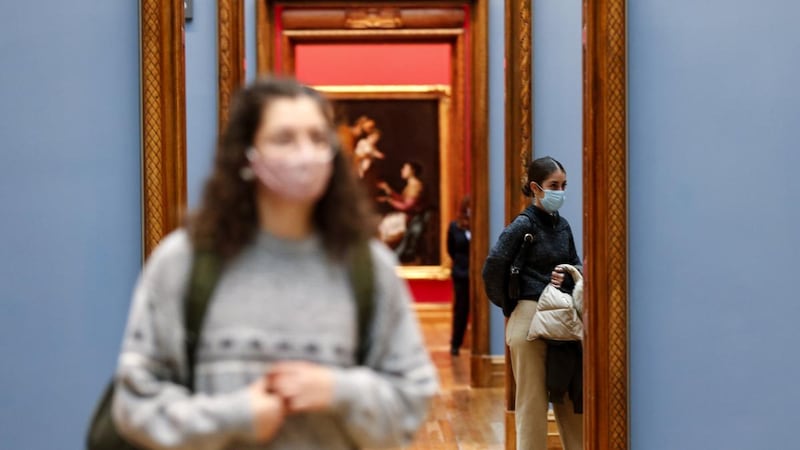Ireland’s national cultural institutions, normally filled with thousands of visitors each month, have been left empty for much of the past year as a result of the Covid-19 pandemic.
Forced closures and fixed overhead costs have meant that many of the institutions, which pride themselves on promoting and preserving Irish culture, have faced financial difficulty.
In an email to the Department of Culture last March, obtained under the Freedom of Information Act, the National Concert Hall's then chief executive Simon Taylor, who was last month succeeded by Robert Read in the role, said there was an "immediate risk" in financial terms for the venue.

In correspondence with the department last year, a financial loss of more than €1.4 million was forecast for the venue by year end, but Mr Taylor told The Irish Times last year it had been reduced, with the final figure expected to be about €600,000.
“The first few months we were really firefighting and handling a huge amount of cancellations and rescheduling and all of that. Once that had sort of settled into a pattern, then we were able to start looking creatively at what the solutions are,” Mr Taylor said.
The NCH closed in March, and – with the exception of a trial show in December – has not yet reopened to the public. For the first time the hall began to live-stream events online, thanks in part to funding from the department.
“It’s a brave new world in a lot of ways. There is a willingness on the public’s behalf to pay for stuff online, to pay for live concerts online. It wouldn’t be, and probably shouldn’t be, what you pay for a live presence in the hall, but nonetheless it is encouraging,” Mr Taylor said.
Imma’s loss
Even the venues permitted to reopen during the periods when restrictions were lifted felt the squeeze of the pandemic. An email from the Irish Museum of Modern Art (Imma) to the department, dated July 7th, said the museum had suffered "a significant loss of commercial income".
“Summer concerts have been cancelled, the bookshop has been closed and sponsorship has declined. The full cash shortfall that Imma is expecting for 2020 is €144,000,” the email stated.
But all was not lost, according to director Annie Fletcher, who said the pandemic had resulted in innovation and creativity, particularly highlighting a need to focus on more local artists.
“[I thought] maybe we should rethink our whole plan in relation to a sustainable practice that still looks at international practice ... but doesn’t necessarily lean on big blockbuster shows,” she said.
Ms Fletcher has also seen an opportunity to incorporate more outdoor events into the institution’s schedule.
“I’m thinking that, with 48 acres, we need to share this. I’m thinking of having four pavilions instead of one,” she said. “If we do our job properly, we should be rolling with the punches, instead of just worrying about the cuts. We need to be flexible and nimble.”
Lynn Scarff, director of the National Museum of Ireland, made a similar point, saying that the absence of international tourists had required institutions to make the local community the "priority".
“People should be able to find something in the institutions that reflects their identity and that we use this time to connect with communities that may [have] thought our institutions weren’t for them in the past,” she said.
Emails from the museum show the estimated net loss of income to be €1.07 million between March and September 2020.
A spokeswoman for the museum said it was projecting losses “broadly in line with original figures” for the whole year, but it still needed to run reports for November and December.
“We’re still kind of seeing the impact of lost revenue, but we’re still trying to get clarity on [2021] in terms of events and different kinds of commercial elements that are booked in. It’s ever evolving,” Ms Scarff said.
Second lockdown
For the National Gallery of Ireland, the announcement of the second lockdown in October-November came shortly before the opening of a new exhibition by Dutch painter Piet Mondrian, which was supported by the department.
"We had a critical decision to make literally at the point of the lockdown to bring over the Mondrian from Holland or not – literally on the day," director Sean Rainbird said. "It was very tough. We agreed it would be something really restorative, even if we lost time."
As it turned out, they did lose time. The show had been due to run until St Valentine’s Day but ceased instead just before Christmas.
At the end of May the institution had forecast Covid-19-related losses to be €1,646,170 for 2020, correspondence shows.
Despite challenges, Mr Rainbird said it was very important to him to still deliver a programme.
“We’re not just here as a dusty tourist venue with nothing happening but lots of pictures on the wall,” he said. “As far as I’m concerned, we still have to do it. So we just have to find a way of trimming here and making more there – basically getting to a place where we can justify responsibly spending our funds.”
He added: “We have a social role in every part of society. We may not do it all at once – sometimes it may involve a very small number of people and may affect a very large number of people – but I think that’s still our role as a gallery.”













